

A salt weld is a surface separating two stratal units formerly separately by salt and now in contact. The recognition of a salt weld, as schematized below is quite important to understand the geology of salt basins and the associated petroleum systems.
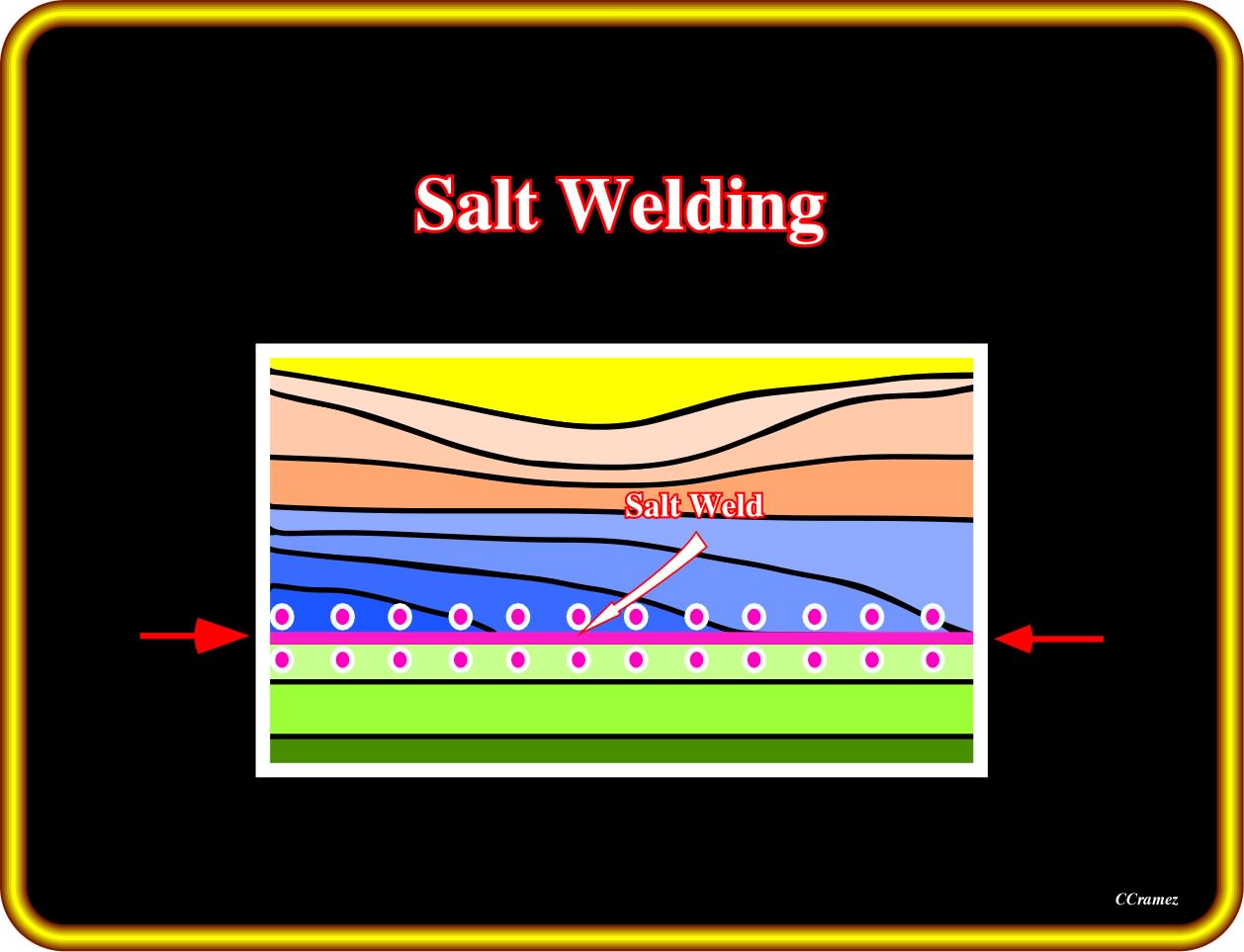
Salt welds allow recognizing deep, thin and vanished salt. When ignored, there is a misinterpretation of the structural history and sequence stratigraphy. When they are combined with extension, as is the case in this sketch, they become complex and overestimations of salt reduction are frequent, as illustrated below.
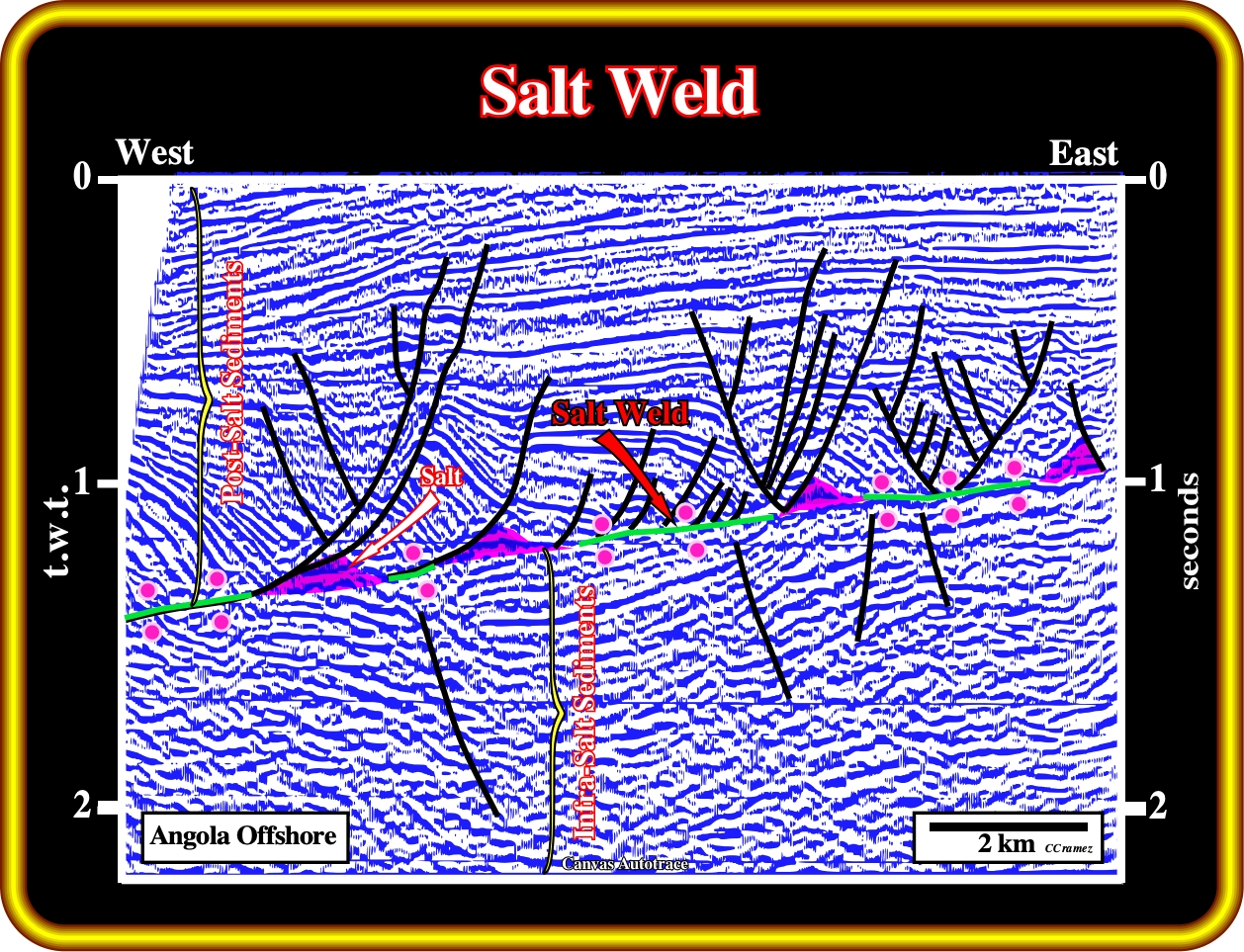
This seismic line suggests that more than 80% of the salt of the salt layer (in purple) was removed down-dip by flowage, which creates a discordantly welding between the supra-salt and infra-salt strata. However, such a surface should not be considered as a major unconformity (in sequential stratigraphic terms), since it does not corresponds to a relative sea level fall, that is to say, to an erosional surface.
In Kwanza basin, there are two types of salt welds:
(i) Primary salt welds,
(ii) Secondary salt welds and
(iii) Tertiary salt welds.
The tertiary salt welds are rare in Kwanza basin, but quite frequents in certain salt basins, as, for instance, in Gulf of Mexico.
Primary welds join strata originally separated by autochthonous salt (see plate below). The welds are generally gently dipping. Joining regional dipping sub-salt strata with supra-salt sediments (overburden), which, locally, dip more steeply, creates a tectonic disharmony, which may look like an angular unconformity.
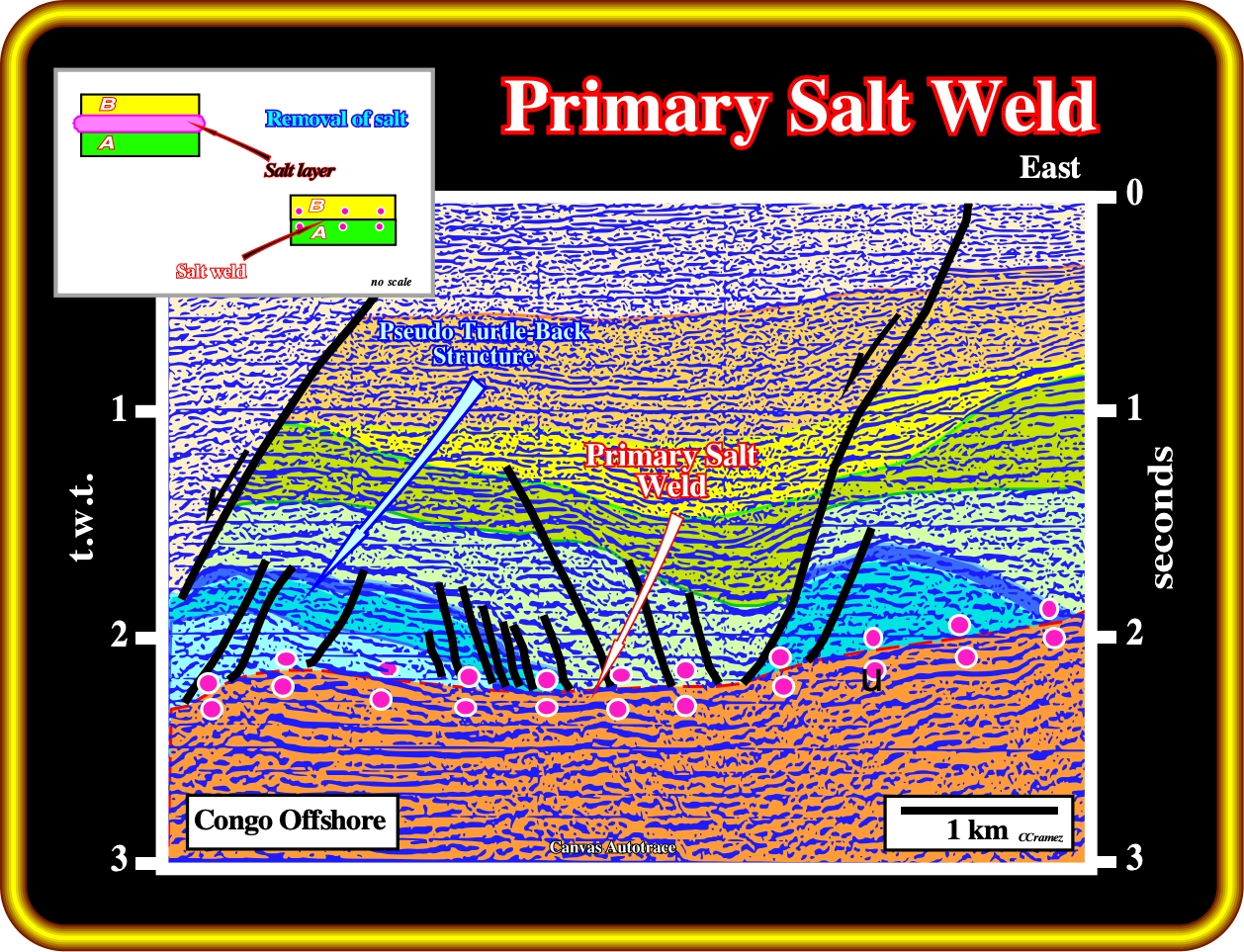
On this geological tentative interpretation of a seismic line from offshore Congo, a primary salt weld is obvious. At the bottom of the supra-salt sediments, the antiform structures (blue colours) are pseudo turtle-backs, since any significant tectonic inversion took place in their structural evolution. They are associated with a salt flowage or with rafting (see later). In fact, the dips are, locally, enhanced by rotation due either to listric faulting or salt withdrawal below lapouts. As you can see, two main pitfalls are produced by this process : (i) Apparent downlaps (see next plate) and (ii) Pseudo turtle-back structures.
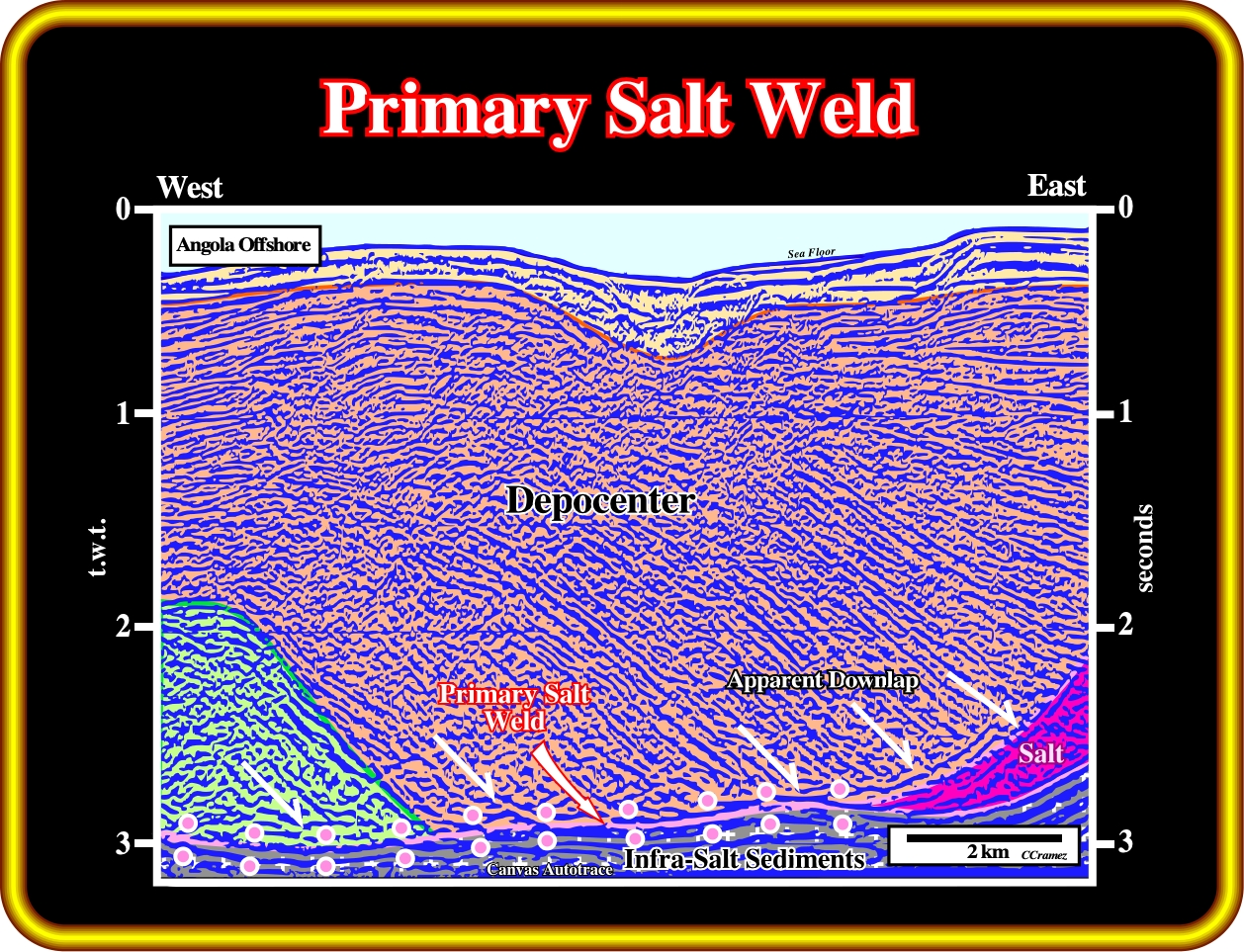
As one can see on this geological tentative interpretation, it is quite simple to differentiate an apparent downlap surface from real one. The seismic interval between two consecutive progradations has a convergent geometry up dip and down-dip, with a maximum thickness between. Conversely, the interval between two consecutive apparent downlap progressively shows down-dip thickening, toward a growth fault plane or a salt weld, as illustrated by the seismic reflections above the primary salt weld. In other words, one can say that the tectonic disharmony induced by the salt welding is enhanced by rotation of the overburden creating apparent downlaps. The original onlaps are tilted, generally, landward as salt withdrawal.
Secondary salt welds join strata originally separated by steep-sided salt diapirs (walls, stocks, etc.). They are near vertical or are steeply dipping. The salt feeding a spreading bulb or allochthonous sheet causes the diapir stem to laterally shrink :
(a) eventually thinning to negligible width or
(ii) pinching off entirely, often by varying amounts of contraction.
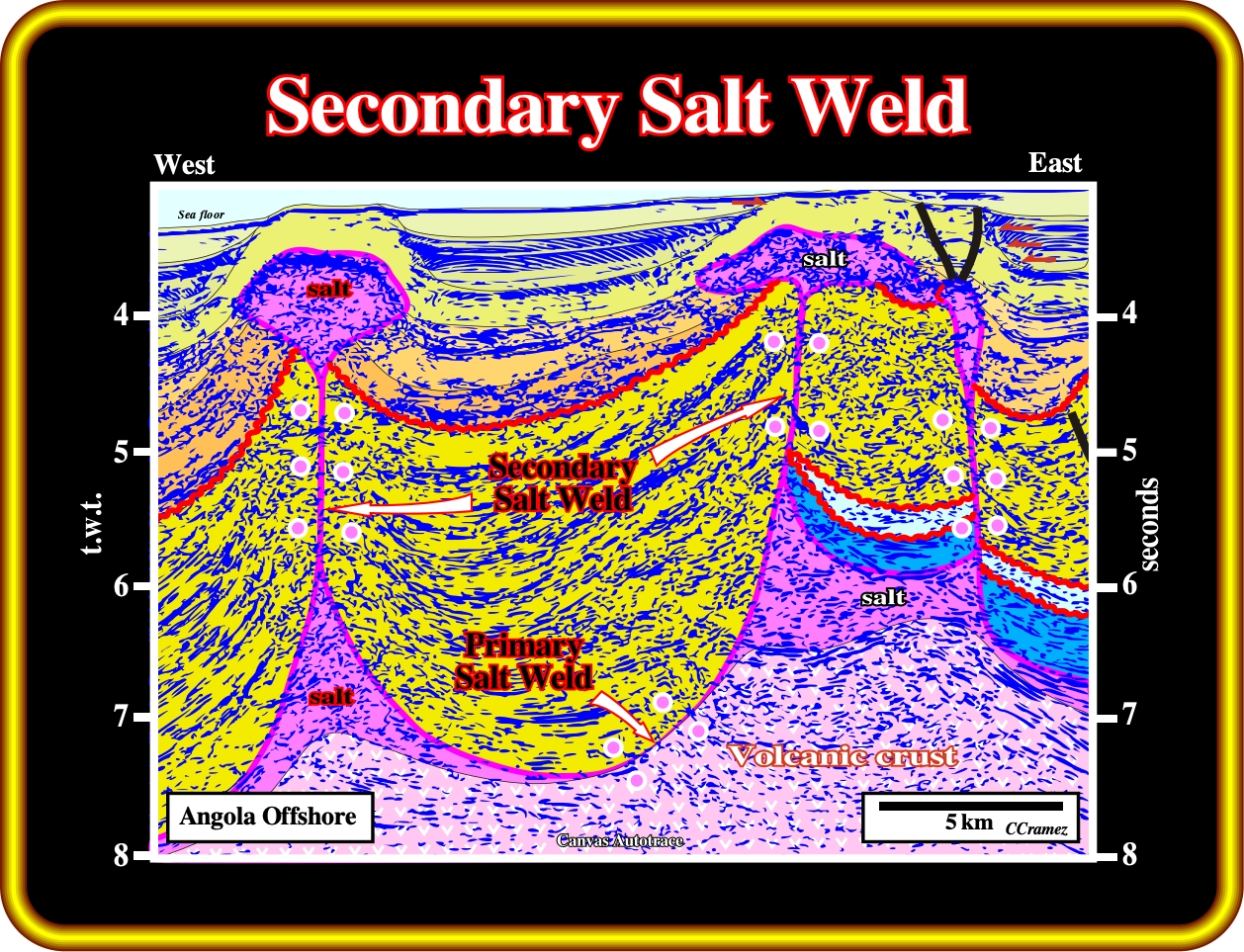
The three salt bulbs (overhanging, swollen crestal portion of a salt diapir, which when extremely broad grades into salt sheets) seem to be connected with the autochthonous mother source layer by vertical secondary welds. In the lower part of the line, a more or less horizontal primary weld is recognized between to autochthonous salt structures. The compressional structures, recognized near the sea floor, strongly suggest that the secondary salt welds result from squeezed salt diapirs.
Tertiary salt welds join strata, originally, separated by a first order or higher allochthonous salt sheet (canopies, tongues, nappes, sills, etc.).
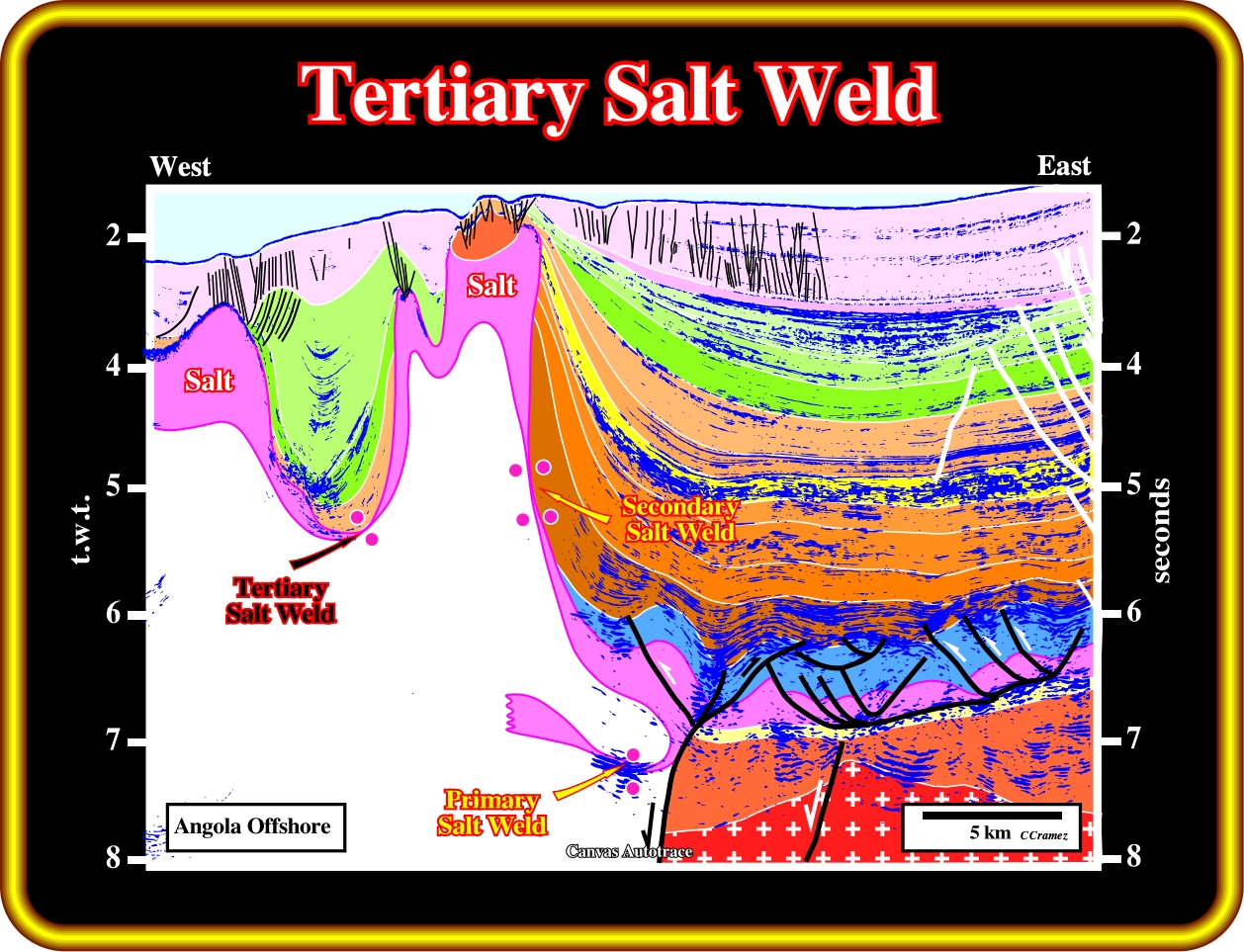
In this tentative interpretation, at the bottom of a mini basin or salt expulsion basin (synkinematic basin subsiding into relatively thick allochthonous salt, which may be the expression of spoke circular or may reflect merely random patterns of differential loading) created a tertiary weld by the flowage of the allochthonous salt. Tertiary salt welds as well as primary salt welds are more or less horizontal, while secondary salt welds are, generally, sub-vertical.
Salt weld should not be confounded with fault welds ("cicatrices salifères", of the old french geoscientists having work in Angola onshore), which are fault surfaced or fault zones joining strata originally separated by autochthonous or allochthonous salt. A fault weld, as illustrated, below, is equivalent to a salt weld along which there has been significant slip or shear. As you will se later, the cover flanking each side of a diapir can then join discordantly together because diapiric growth is usually asymmetric. In such case, the salt weld resembles a growth-fault whether or not such a fault localized the formation of the diapir.
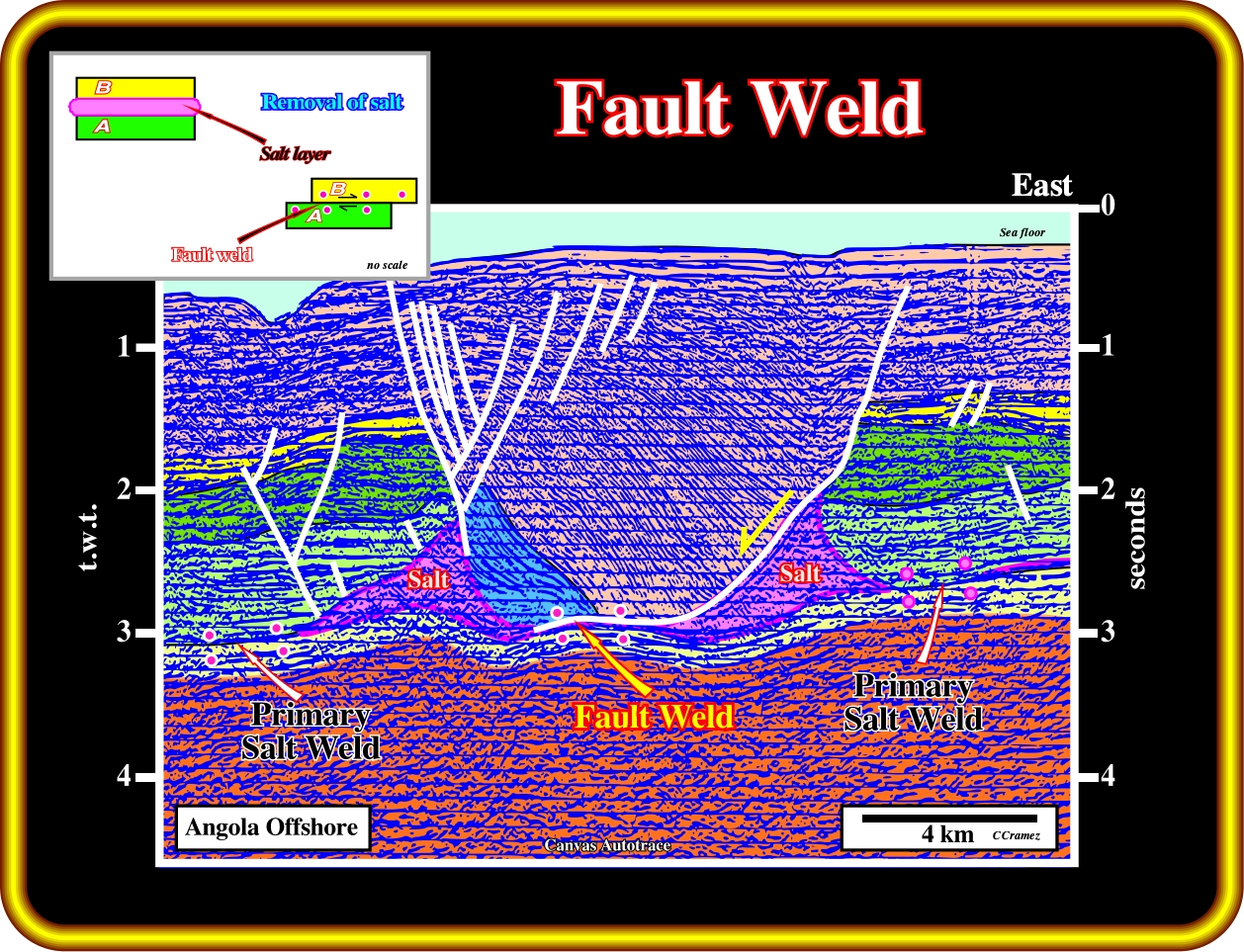
Between two primary salt welds, along which, apparently, no lateral displacement took place, there is a fault weld associated with the fault plane of a major growth-fault. The rotation of the chronostratigraphic reflectors within the downthrown faulted block strongly suggest a significant movement along the major fault plane, therefore along a fault weld. The fault plane roughly localize the eastern flank of the original salt diapir, which at present time is reduced to a salt roller.
Exercise 1:
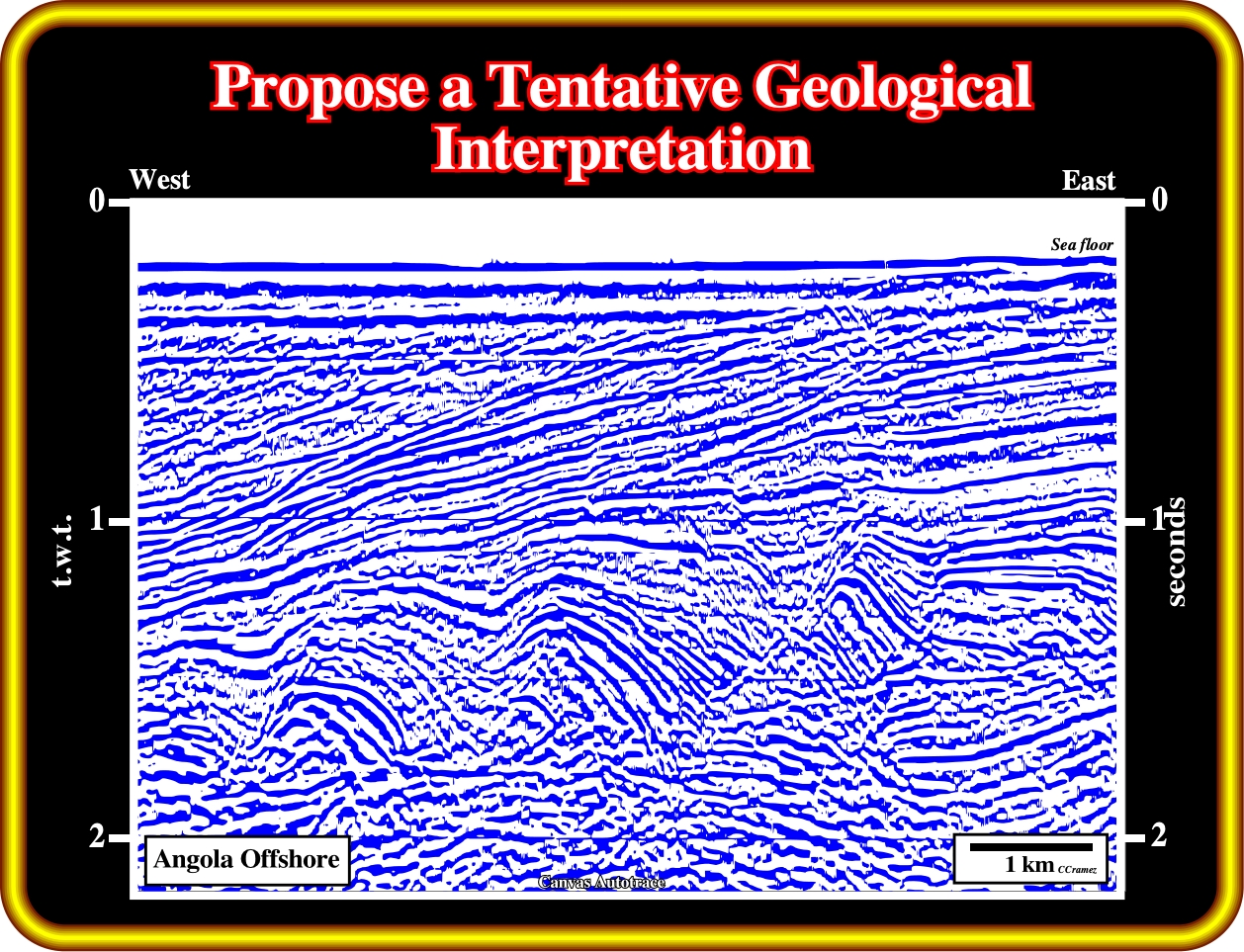
(i) The bottom of the autochthonous salt and/or the associated salt welds (primary salt weld) ;
(ii) The top of the basement ;
(ii) The breakup unconformity, which separates de the margin sediments from the rift-type basin sediments ;
(iv) The faulting patterns ;
(v) Differentiate the (a) growth faults, (b) rollovers, (c) compensation grabens ;
(v) Fault welds.
Finally, we must propose the more likely origin of the structures recognized on this line, i.e., are they the result of halokinesis or salt tectonics (tectonic regime deforming all sedimentary column in which a salt layer is interbedded) ?
Exercise 2:
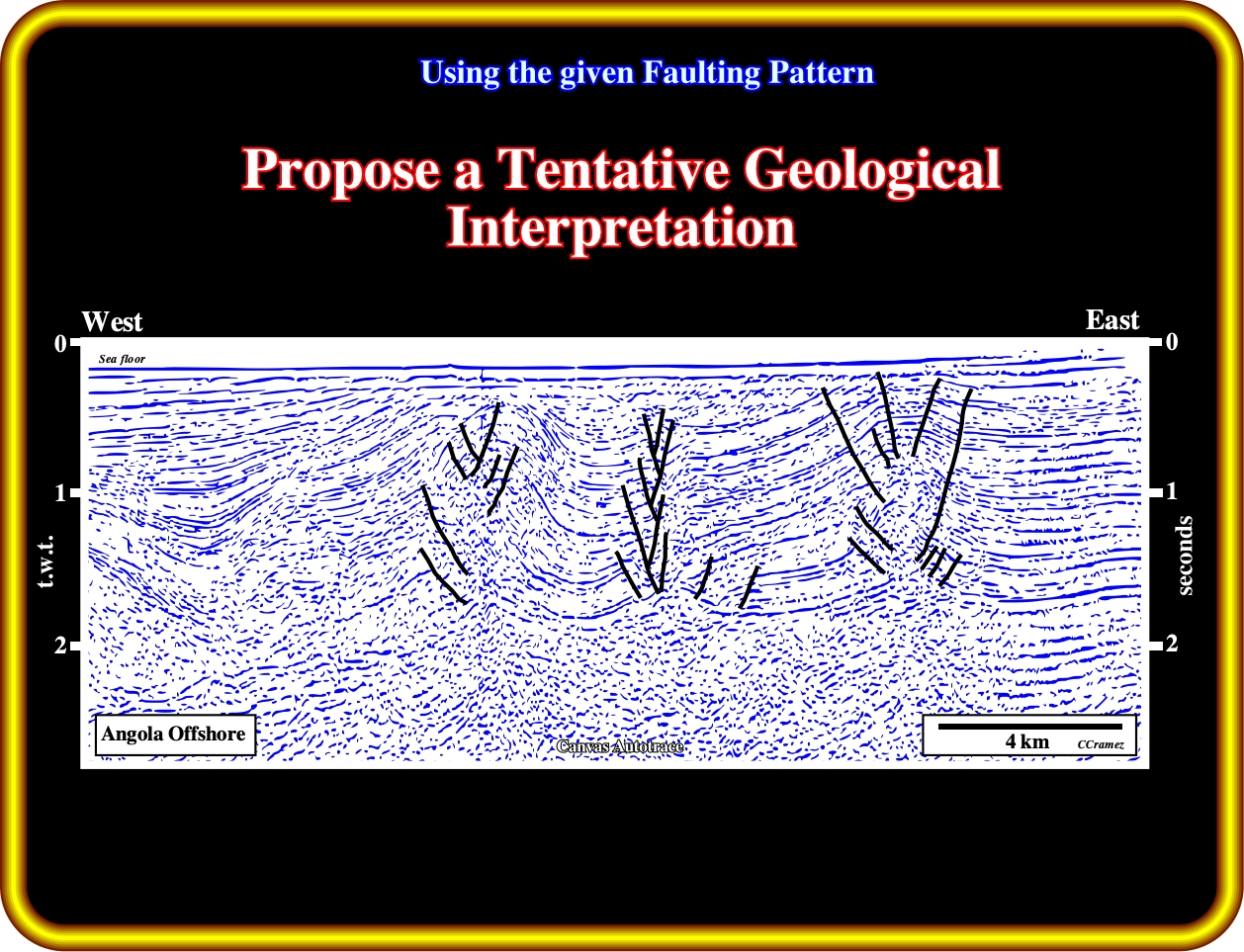
- The bottom of the salt and/or, the primary salt welds ;
- The limits of the autochthonous salt ;
- The limits of the allochthonous salt ;
to continue press
next